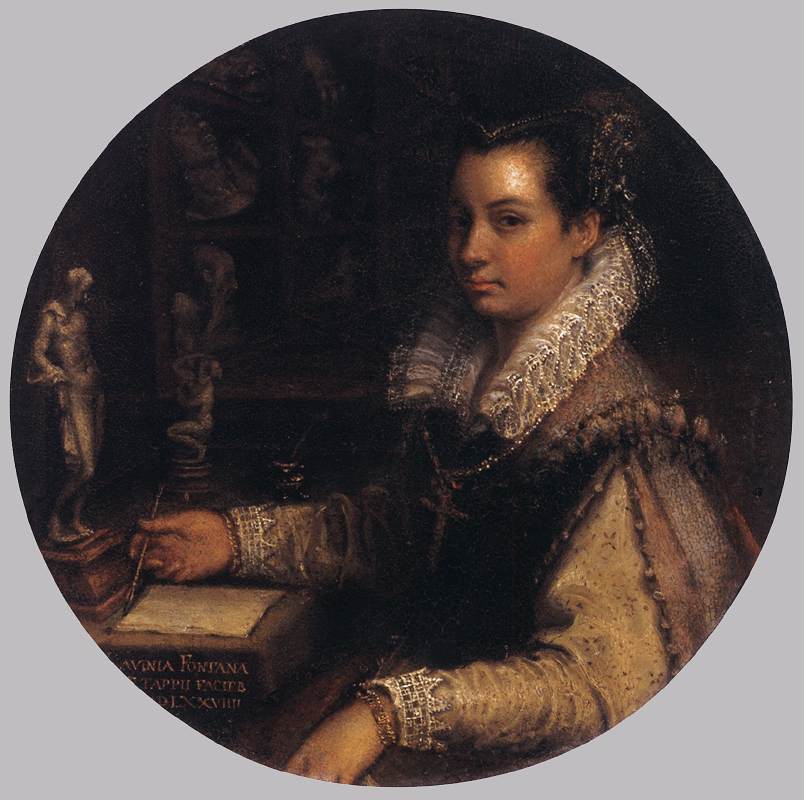Lavinia Fontana (1552-1614) was born in Bologna where she received an elite education in letters and music, and only later studied art with her father, the painter Prospero Fontana . In 1577 she married Gian Paolo Zappi, a minor nobleman with little money. She gave birth eleven times, although only four of her children survived infancy, and just three outlived her. Fontana was one of the first female painters of the Renaissance to be widely recognized during her lifetime and professionally successful. The artist spent most of her life in Bologna, and she painted many portraits of fashionable upper class women in that city. She was equally celebrated for her sacred paintings, which captured counter-reformation sensibilities and earned her many commissions from the pope. To be nearer the papal court, for which she became official portraitist, during the last decade of her life she moved to Rome. There she was honored by being accepted into the artistic Academy of San Luca, normally closed to women.
 Lavinia Fontana Self-portrait, Uffizi Gallery, Florence
Lavinia Fontana Self-portrait, Uffizi Gallery, Florence
RESOURCES
Cantaro, Maria Teresa. Lavinia Fontana, bolognese: “pittora singolare,” 1552-1614, Milan: Jandi Sapi, 1989.
Cheney, Liana.“Lavinia Fontana, Boston Holy Family,” in Woman’s Art Journal 5, no. 1 (1984): 12–15.
Galli, Romeo. Lavinia Fontana pittrice: 1552-1614, Imola, Tipografia Galeati, 1940
Garrard, Mary D.“Here’s Looking at Me: Sofonisba Anguissola and the Problem of the Woman Artist.” Renaissance Quarterly 47, no. 3 (1994): 556–622.
Jacobs, Fredrika. Defining the Renaissance Virtuosa: Women Artists and the Language of Art History and Criticism, Cambridge: Cambridge University Press, 1997.
Jacobs, Fredrika.“Woman’s Capacity to Create: The Unusual Case of Sofonisba Anguissola,” in Renaissance Quarterly 47, no. 1 (1994): 74–101.
Murphy, Caroline P. “Lavinia Fontana and Le Dame della Città: Understanding Female Artistic Patronage in Late Sixteenth-Century Bologna,” in Renaissance Studies 10, no. 2(1996): 190-208.
Murphy, Caroline P., Lavinia Fontana: A Painter and Her Patrons in Sixteenth-Century Bologna, New Haven, CT: Yale University Press, 2003.
Ragg, Laura. The Women Artists of Bologna, London: Methuen, 1907.
LINKS
Lavinia Fontana National Museum of Women in the Arts
Lavinia Fontana Virtual Uffizi Gallery
